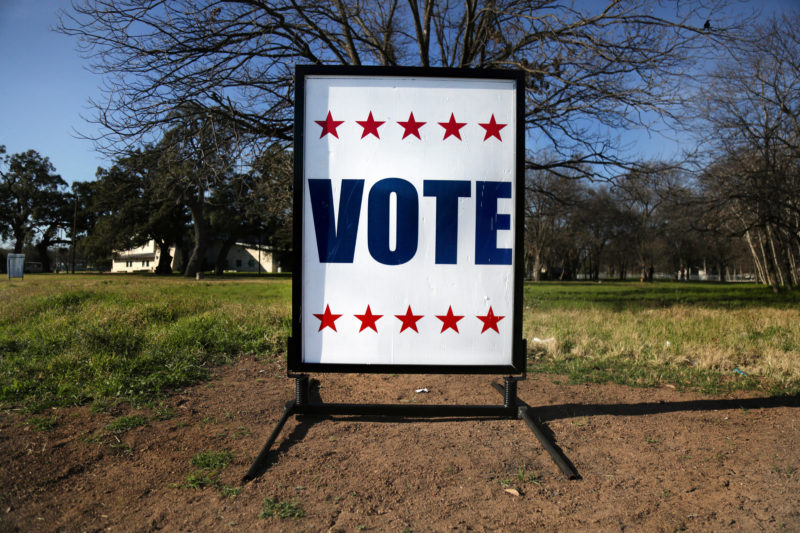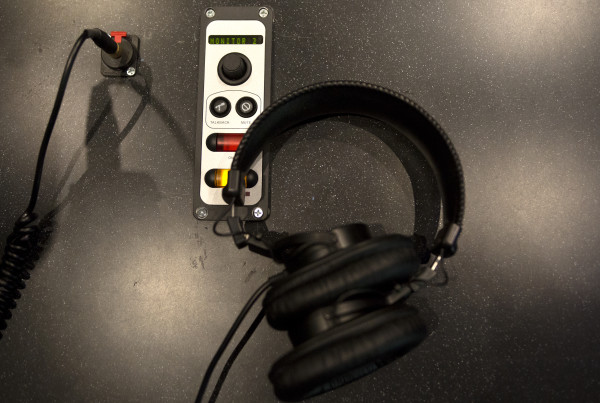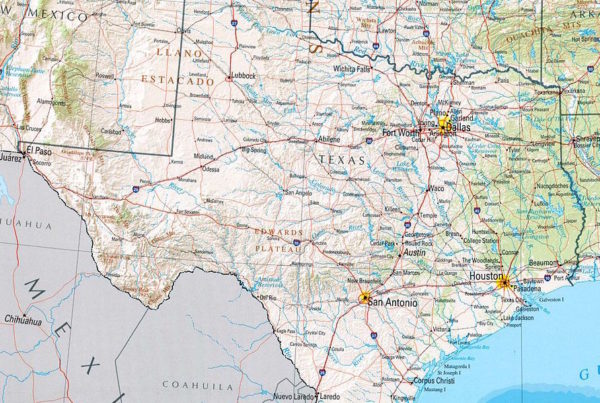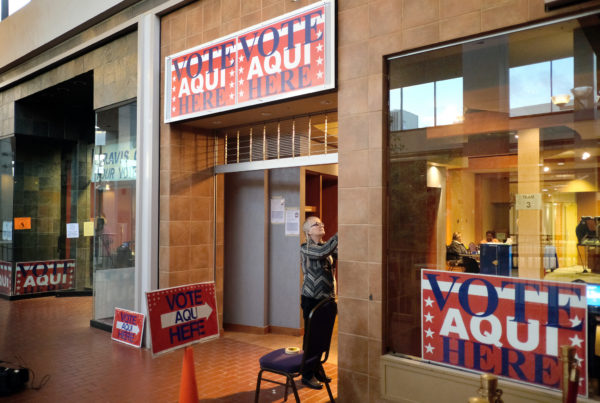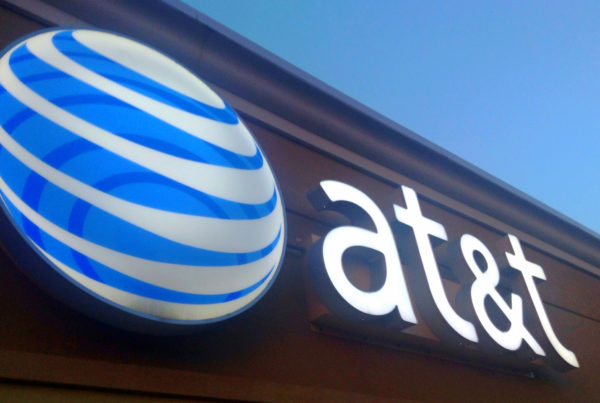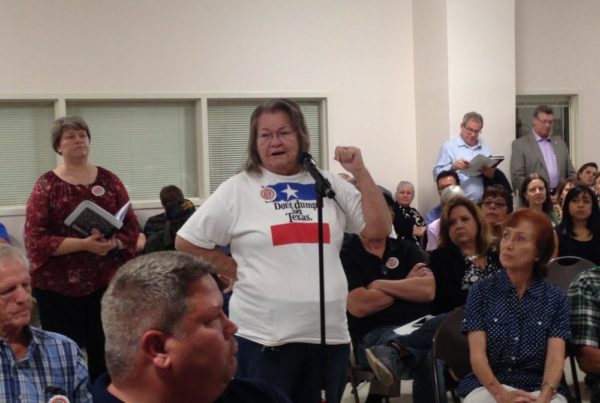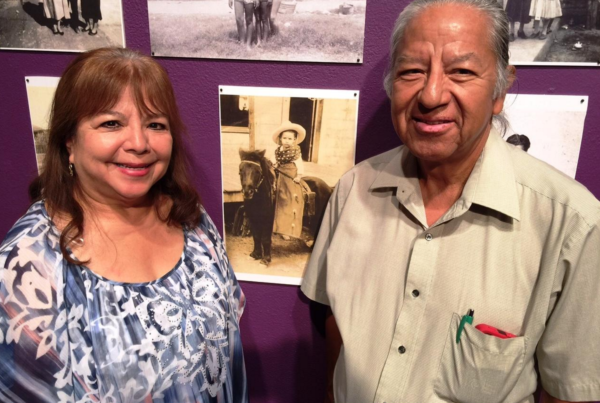All this week the Texas Station Collaborative will be answering the top five questions you asked us about the 2016 election as part of our statewide series, #TxDecides. KUT News answers the first voter question.
We all know Texas is a red state. Democrats haven’t won a statewide election since 1994, and Republicans have carried the state in every presidential election since 1976.
The question of how that came to be got Gilda Garcia wondering, so she asked TXDecides – our statewide public radio collaborative that’s answering Texas voters’ questions ahead of Election Day.
“I remember growing up my parents talking about Texas being all Democratic – period,” Garcia said. “So what happened?”
In short, it’s complicated.
Go West
Let’s start by talking about what happened to voters. Even when Texans voted for Democrats, it was still a conservative state. It still had two parties, but the parties were conservative Democrat and moderate Democrat. Up until the 1970s, voting for Democrats was just what you did.
“A lot of southerners would be Democrats back then,” explained Lynn Foster, who grew up an Oklahoma Democrat. “And, so, they would inherit the Democratic party from their parents, on down and grandparents and so on.”
When he came to Texas in the late ’70s, just like hundreds of thousands of others did, the state’s economy was booming. Matthew Dowd, who worked on President George W Bush’s 2004 re-election campaign, says the people that came here brought even more conservative ideals with them.
“People that were coming here because they wanted lower taxes, or they were coming here because they didn’t like regulations, or they were coming here because they had a greater degree of freedom,” he said.
Those people settled in the state’s metro areas. People like Lynn Foster, who moved to Fort Worth.
“There were a lot of conservatives where I worked. It was a military contractor,” said Foster. “I got to listening to what they were saying, and seeing what the Democratic Party was doing, and I decided that they were right and the Democratic party was wrong.”
Changing Parties
So, more conservatives were moving to Texas, but, like Foster, many were still Democrats. Changing that took encouragement, or discouragement, from the parties. Dowd says that began with the parties moving away from the middle.
“The brands of the two political parties. The way they became and the way they moved to the outer edges,” said Dowd. “The Democratic brand becoming more liberal or progressive; the Republican brand becoming more conservative.”
Former Democrat Foster says it was his perception that Democrats were giving away tax dollars to help others.
“Well, certainly one of the big things was the welfare state. I certainly as a college student had a lot of sympathy for people and things like that,” said Foster. “But, after I later determined that other people were having to pay for that kind of thing, I didn’t think it was right.”
And Republicans across the South capitalized on that sentiment. In Texas, Sen. John Tower – the first Texas Republican senator elected since Reconstruction – was elected in 1961 (replacing LBJ in the Senate) on a platform opposing his “New Frontier” policies, which later included the Civil Rights Act of 1968, as well as entitlement programs.
While that statewide opposition did open Texas up to Republicans, it didn’t necessarily solidify Texas as a red state – Texas was one of two states to elect Jimmy Carter in 1976 – and the state elected Democratic Gov. Ann Richards in 1990.
Creating a Villain
Here’s where the Republican Party jumped in. It used concerns like this to create the idea of the “tax-and-spend liberal.”
And for presidential elections, that tact worked pretty well. Foster, along with most Texans voted for Ronald Reagan in 1980. But, when Republicans used the same attack against Democrats in local races, it didn’t work as well. Harvey Kronberg is publisher of a political newsletter called Quorum Report.
“When they started running these harsh negative campaigns against them, it backfired for almost a decade,” explained Kronberg. “People would say, ‘Candidate or State Representative X is a tax-and-spend liberal.’ But the folks that sat around the coffee shop with them knew that he wasn’t a tax-and-spend liberal. And so it undermined the Republican message.”
So, that provided a bit of a firewall for Democrats, but, as those known lawmakers started to retire, the unknown Democrats running to replace them had a harder time shaking the liberal label.
While the state started voting for Republican presidents in 1980, Republicans didn’t lock down all the statewide offices until the mid to late ’90s, and didn’t totally control the state legislature until 2003.
Now along the way, there weren’t just wins at the ballot box. There were wins in back rooms. Meetings convincing business groups that had given money to Democrats for decades to start funding Republican campaigns, and, Dowd says, meetings with conservative Democrats on the brink of losing their next election.
“There was a lot of convincing that Republicans were doing for Democratic office holders saying, ‘You better switch or you’re going to get beat.’ And that happened,” said Dowd. “They basically just ran the numbers for them and said, ‘If you want to hold office, you better switch parties.'”
And, switch they did; probably the most famous one being a West Texas Democrat named Rick Perry.
Red Today, Blue Tomorrow?
Texas is now a Red State. But, how long will it stay that way. Polls in Texas show GOP Presidential nominee Donald Trump leading Democrat Hillary Clinton by just 3 or 4 points. But there’s a lot of evidence that suggests it’s not support for Clinton, but dislike of Trump that’s causing the close race.
Dowd said mix that with ongoing dislike of the Democratic brand and you have a state ready to elect an independent candidate.
“So you have Democrats who can’t elect somebody statewide that’s disenfranchised. You have independents who don’t participate in the two parties that’s disenfranchised. And you have about a third of Republican primary voters who are reasonable, thoughtful, sort of main stream, who really have no power because of what the party has become,” Dowd explained. “That is a large group of voters that really, fundamentally, can only be tapped by an independent.”
Who will that independent candidate be? What office will they run for? And when will they run? We may be able to start answering those questions after Nov. 8.
Clarification: This post was updated to add additional information on Republican sentiment toward entitlement programs and the Civil Rights Act.


